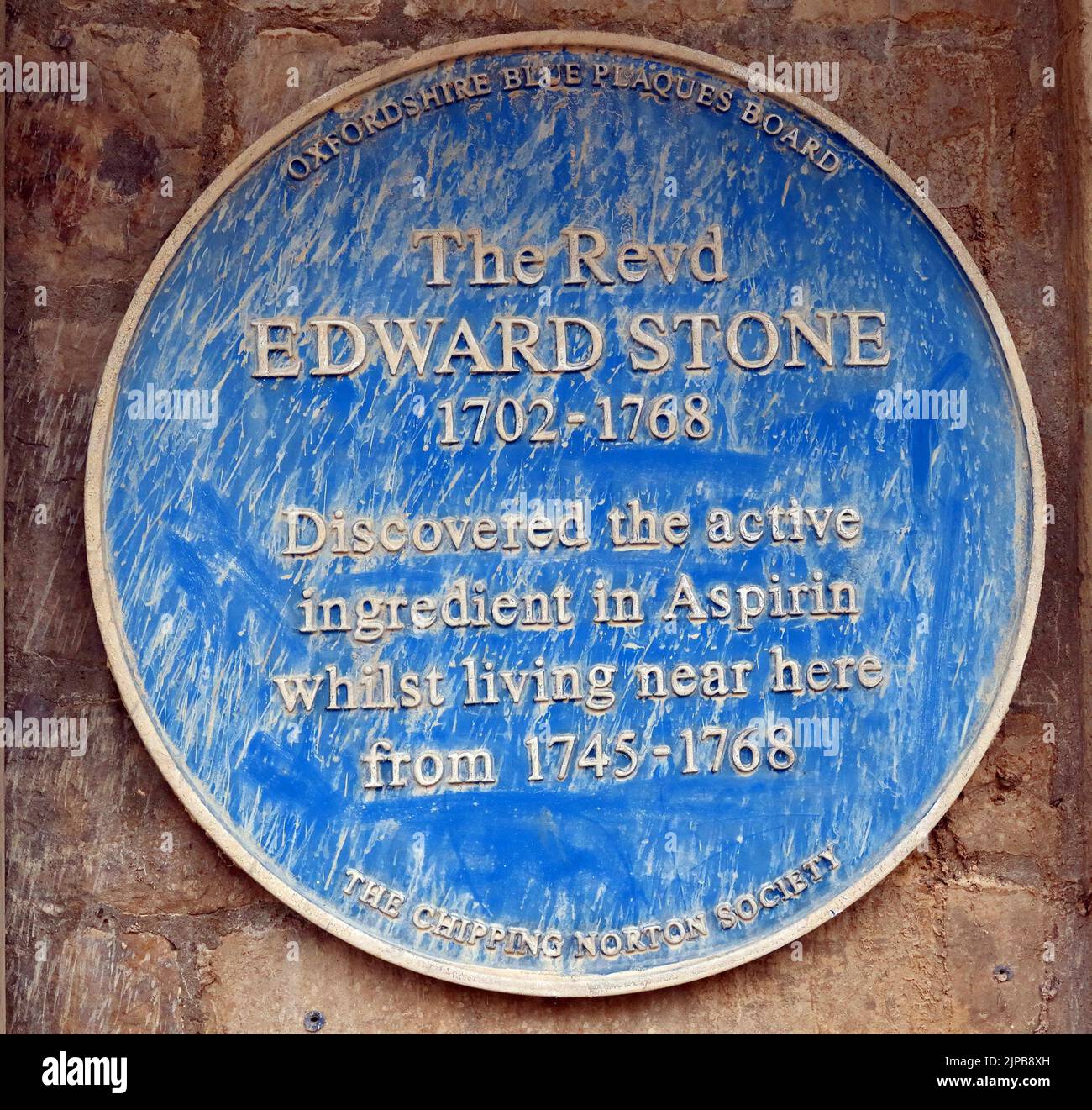Blue plaque, Revd Edward Stone 1702-1768, discovered Asprin.The old town hall, Chipping Norton, West Oxfordshire, England, UK, OX7 5NA

Image details
Contributor:
Tony Smith / Alamy Stock PhotoImage ID:
2JPB8XHFile size:
40.2 MB (2.6 MB Compressed download)Releases:
Model - no | Property - noDo I need a release?Dimensions:
3852 x 3648 px | 32.6 x 30.9 cm | 12.8 x 12.2 inches | 300dpiDate taken:
31 July 2022Location:
Chipping Norton, West Oxfordshire, England, UK, OX7 5NAMore information:
Edward Stone (1702–1768) was a Church of England cleric who discovered the active ingredient of aspirin. Life Edward Stone was born in Princes Risborough, Buckinghamshire, England, in 1702. His parents were Edward Stone, a gentleman farmer, and his first wife Elizabeth Reynolds. His mother having died, his father took a second wife, Elizabeth Grubb, in 1707; the Grubb family was to play a major role in Stone's life. Stone went to Wadham College, Oxford, in 1720, where in 1730 he became a Fellow. In 1728 or 1729 he was ordained deacon and priest, and served as curate at Charlton-on-Otmoor. Stone at one time lived on the site of the Hitchman Brewery in West Street, Chipping Norton, where a blue plaque has now been erected. He was buried in Horsenden in 1768 He experimented by drying a pound of willow bark and creating a powder which he gave to about fifty persons: it was consistently found to be "a powerful astringent and very efficacious in curing agues and intermitting disorders".’ He had discovered salicylic acid, the principal metabolite of aspirin. On 25 April 1763, he sent a letter announcing his discovery to George Parker, 2nd Earl of Macclesfield, President of the Royal Society. A less corrosive compound of salicylic acid, acetylsalicylic acid, produced by reacting sodium salicylate with acetyl chloride, was developed from 1897 by Felix Hoffmann and Arthur Eichengrün. It was marketed by Bayer under the name Aspirin which was registered as a trade name on 23 January 1899. There is little evidence that Stone's idea was taken up by the medical profession. Jeffreys could only find one doctor in Hertfordshire and one pharmacist in Bath who tried using willow bark as a cure for the ague. The latter described it as cheaper than quinine, but never published any findings about its efficacy